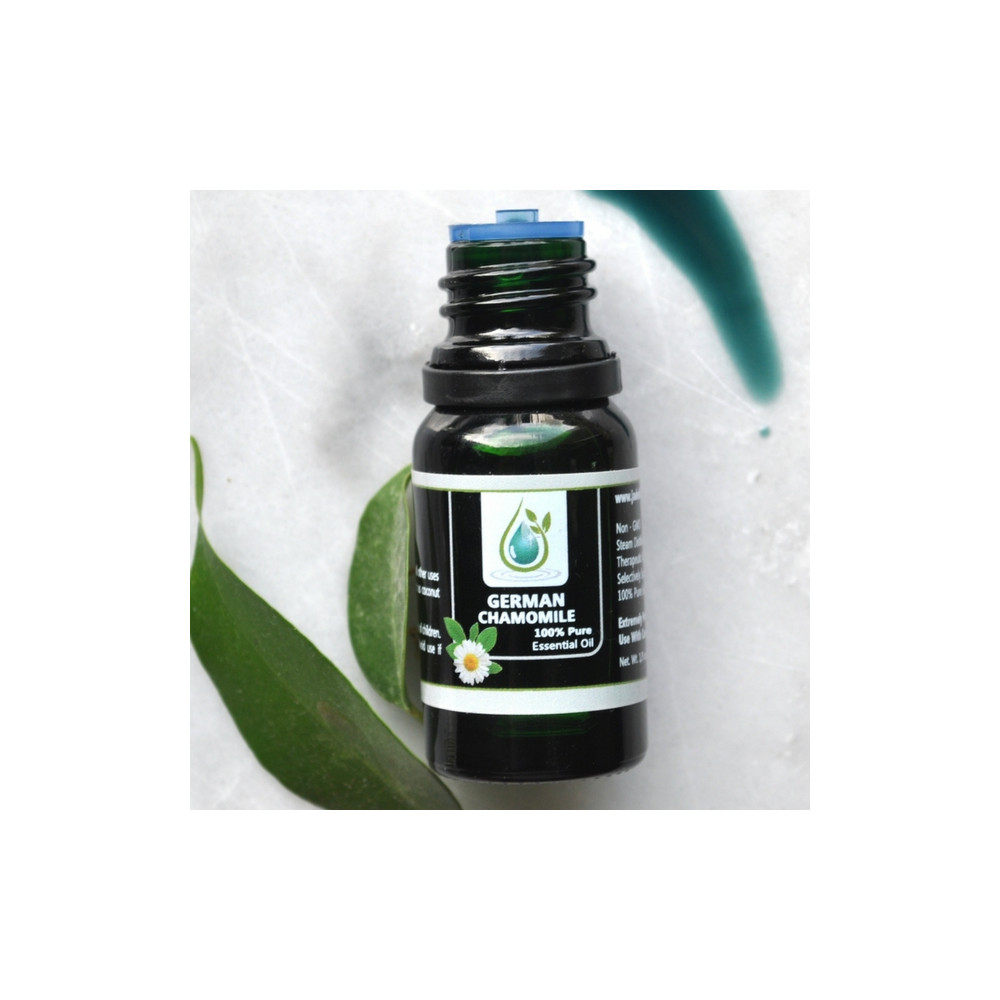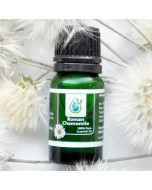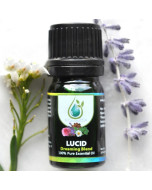Chamomile German - Rare 100% Pure Essential Oil
German Chamomile Essential Oil
100% Pure Essential Oil
Scientific name: Matricaria chamomilla (syn. Matricaria recutita)
Plant Part: Flowers
Plant Family: Asteracea (Compositea)
Extraction: Steam distillation
Aroma: Deep, sweet, herbaceous, floral, grassy
Odor strength: High
Evaporation: Middle Note
Origin : Germany
German Chamomile is an annual plant from the Asteracea family, also known as the daisy or aster family. German Chamomile is also referred to as Hungarian Chamomile, Wild Chamomile, or Blue Chamomile. The chemical constituent chamazulene is what gives German Chamomile essential oil its striking blue color. Chamazulene has well known anti-inflammatory properties for use with skin applications. German chamomile essential oil is an exotic treasure of an oil. German Chamomile is a good choice for applications intended for mood, nervous, immune, musculoskeletal, digestive,
lymphatic, skin, respiratory, urinary, circulatory, and women’s conditions.
Please note: 4% is the maximum dermal use level recommended. Use in low concentrations. Patch test first and use with caution if allergic to Ragweed or plants from the Asteracea (Compositea) plant family. Possibility of contact dermatitis or skin irritation. Some known drug interactions.
Suggested Uses:
Topical (rollers, massage oils, salves, lotions, creams)
Diffusing
Personal inhalers
Compresses
Steam inhalation
Baths, foot soaks
Aroma sticks, jewelry, stones
Reed diffuser or skewers
Cosmetic applications, personal care formulations, shampoo, soaps, perfumery, and candles
Emotional Qualities:
Calm
Friendliness
Peaceful
Ease
Communication
Hopeful
Restoration
Self-expression
Success
Confidence
Restful
Remembrance
Balanced
Comfort
Letting go
Soothing
Blends Well With:
Allspice, Amyris Sandalwood, Balsam fir, Bergamot, Black pepper, Black spruce, Blood orange, Blue tansy, Cedarwood Atlas, Cedarwood Himalayan, Cardamom, Roman chamomile, Clary sage, Copaiba, Coriander, Cypress, Eucalyptus, Frankincense, Geranium, Ginger, Helichrysum, Ho wood, Jasmine, Lavender, Lemon, Lemongrass, Lemon Eucalyptus, Lime, Mandarin, Marjoram, Myrrh, Neroli, Nutmeg, Orange, Patchouli, Peppermint, Petitgrain, Ravensara, Rose, Rosemary, Siberian fir, Spearmint, Valerian, Vanilla, and Ylang ylang
Primary Chemical Constituents:
a-Bisabolol oxide A
trans-β-Farnesene
cis-Spiroether
a-Bisabol oxide B
a-Bisabolone oxide
Primary Known Properties of Chemical Constituents in German Chamomile:
Antispasmodic
Antioxidant
Anti-Inflammatory
Antiviral
Antibacterial
Antimicrobial
Roman vs. German Chamomile - What the Difference?
Two of the most gentle, non-toxic, non-irritating essential oils, with Roman chamomile being widely considered the more gentle chamomile oil for use with young children.
Roman chamomile is an evergreen perennial plant while German chamomile is an annual plant and both come from different genus and species.
Roman chamomile’s aroma is crisp, sweet, fruity, apple-like and herbaceous, and German chamomile’s aroma is deep, sweet, herbaceous, and grassy.
They create a wonderful synergy with each other and are often used interchangeably. They have markedly different chemical components and can be used for different applications. Both are good choices for applications intended for mood, nervous, musculoskeletal, digestive, immune, skin, and women’s conditions. German chamomile is blue colored because of the chemical constituent, chamazulene, and is also a
good choice for applications intended for lymphatic, respiratory, urinary, and circulatory conditions.
Disclaimer:
The above statements have not been evaluated by the FDA
This information is for educational purposes only, it is not intended to treat, cure, prevent or, diagnose any disease or condition. Nor is it intended to prescribe in any way. This information is for educational purposes only and may not be complete, nor may its data be accurate.
Safety precautions: Extremely potent use with care. Consult a professional reference for correct dilution ratios prior to application.
Avoid in pregnancy and lactation. Keep away from eye area. Keep out of reach of children.
You won't find a higher quality 100% pure German Chamomile Essential Oil anywhere.
| UPC Barcode | 641990784206 |
|---|---|
| Scientific Data | U.S. National Library of Medicine "These findings indicate the potential of M. chamomilla L. essential oil in preventing fungal contamination and subsequent deterioration of stored food and other susceptible materials." Complete Scientific Study Available: http://www.ncbi.nlm.nih.gov/pubmed/20385420
"Chamomile is used mainly as an antiinflammatory and antiseptic, also antispasmodic and mildly sudorific." "It is used internally...for disturbance of the stomach associated with pain, for sluggish digestion, for diarrhea and nausea; more rarely and very effectively for inflammation of the urinary tract and for painful menstruation. Externally, the drug in powder form may be applied to wounds slow to heal, for skin eruptions, and infections, such as shingles and boils, also for hemorrhoids and for inflammation of the mouth, throat, and the eyes." Complete Scientific Study Available: http://www.ncbi.nlm.nih.gov/pmc/articles/PMC3210003/ Fatouma, M. A. L., Nabil, M., Prosper, E., Adwa, A. A., Samatar, O. D., Louis-Clement, O. & Mamoudou, H. D. (2011). Roozbeh Farhoudi, Dong-Jin Lee. (2017). Chemical constituents and antioxidant properties of Matricaria recutita and
|
| Uses | Pain / Inflammation, Sleep, Skincare, Relaxation, Wellness, Haircare, Antibacterial / Antiviral, Allergies |
| Aroma | Fruity |




